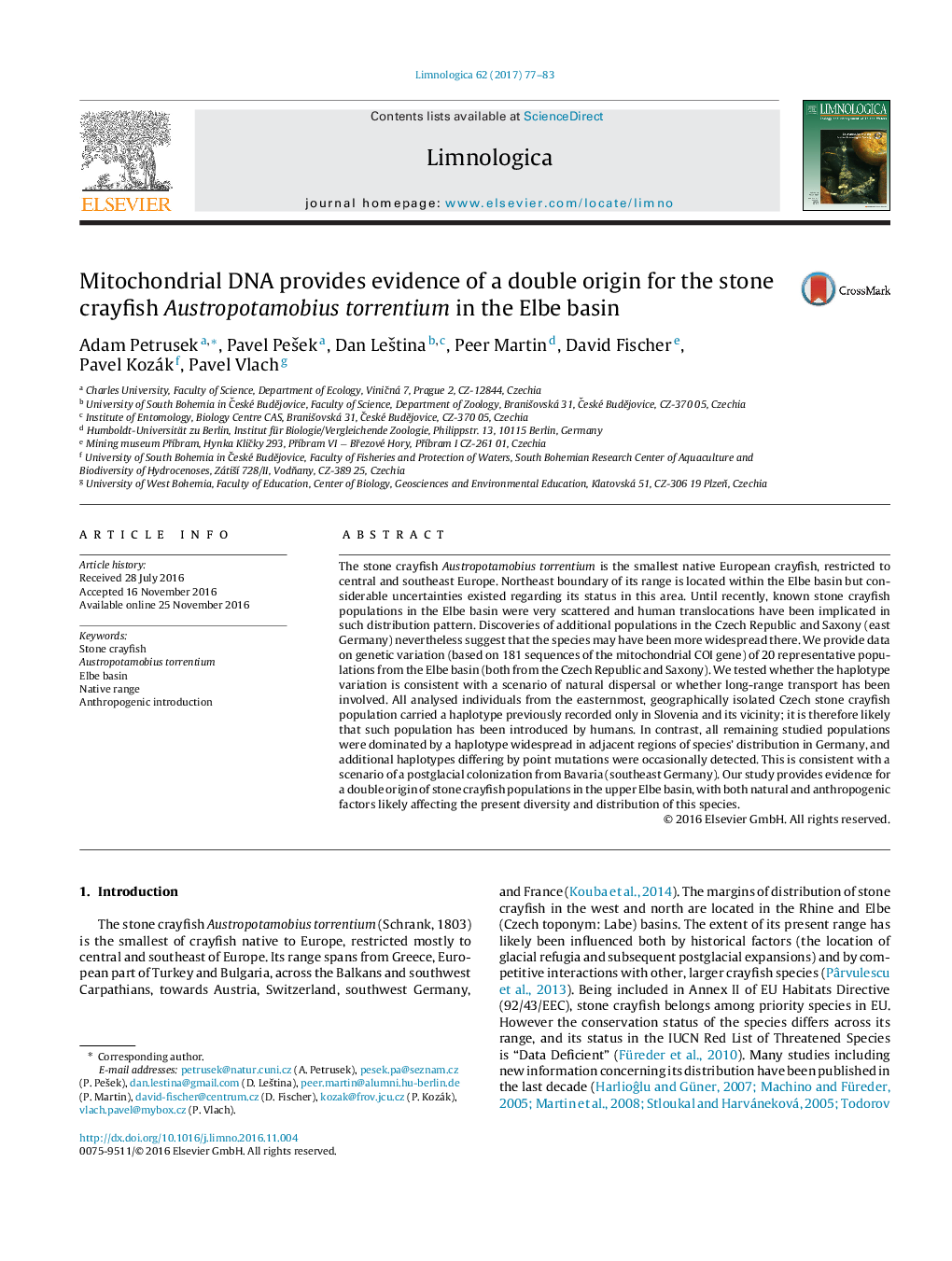| کد مقاله | کد نشریه | سال انتشار | مقاله انگلیسی | نسخه تمام متن |
|---|---|---|---|---|
| 5744891 | 1618560 | 2017 | 7 صفحه PDF | دانلود رایگان |

- Native status of stone crayfish in the Elbe basin has been challenged in the past.
- We studied genetic variation of representative populations from this region.
- Haplotype variation of the mitochondrial COI gene confirms species' double origin.
- Stone crayfish probably colonised the Elbe basin from the Danube basin naturally.
- One population in eastern Bohemia was introduced by men, probably from Slovenia.
The stone crayfish Austropotamobius torrentium is the smallest native European crayfish, restricted to central and southeast Europe. Northeast boundary of its range is located within the Elbe basin but considerable uncertainties existed regarding its status in this area. Until recently, known stone crayfish populations in the Elbe basin were very scattered and human translocations have been implicated in such distribution pattern. Discoveries of additional populations in the Czech Republic and Saxony (east Germany) nevertheless suggest that the species may have been more widespread there. We provide data on genetic variation (based on 181 sequences of the mitochondrial COI gene) of 20 representative populations from the Elbe basin (both from the Czech Republic and Saxony). We tested whether the haplotype variation is consistent with a scenario of natural dispersal or whether long-range transport has been involved. All analysed individuals from the easternmost, geographically isolated Czech stone crayfish population carried a haplotype previously recorded only in Slovenia and its vicinity; it is therefore likely that such population has been introduced by humans. In contrast, all remaining studied populations were dominated by a haplotype widespread in adjacent regions of species' distribution in Germany, and additional haplotypes differing by point mutations were occasionally detected. This is consistent with a scenario of a postglacial colonization from Bavaria (southeast Germany). Our study provides evidence for a double origin of stone crayfish populations in the upper Elbe basin, with both natural and anthropogenic factors likely affecting the present diversity and distribution of this species.
344
Journal: Limnologica - Ecology and Management of Inland Waters - Volume 62, January 2017, Pages 77-83